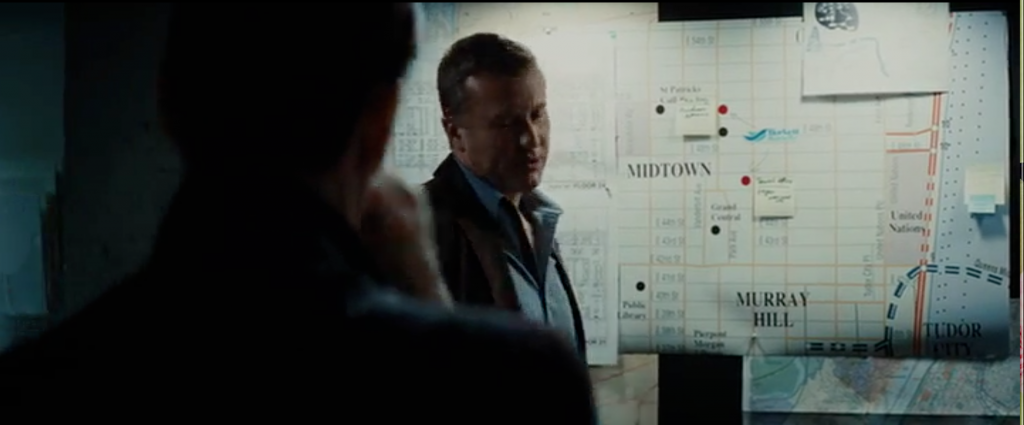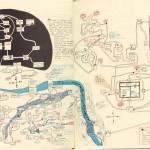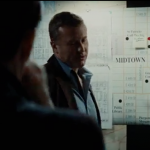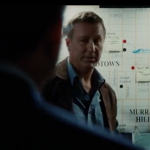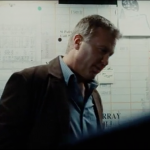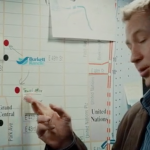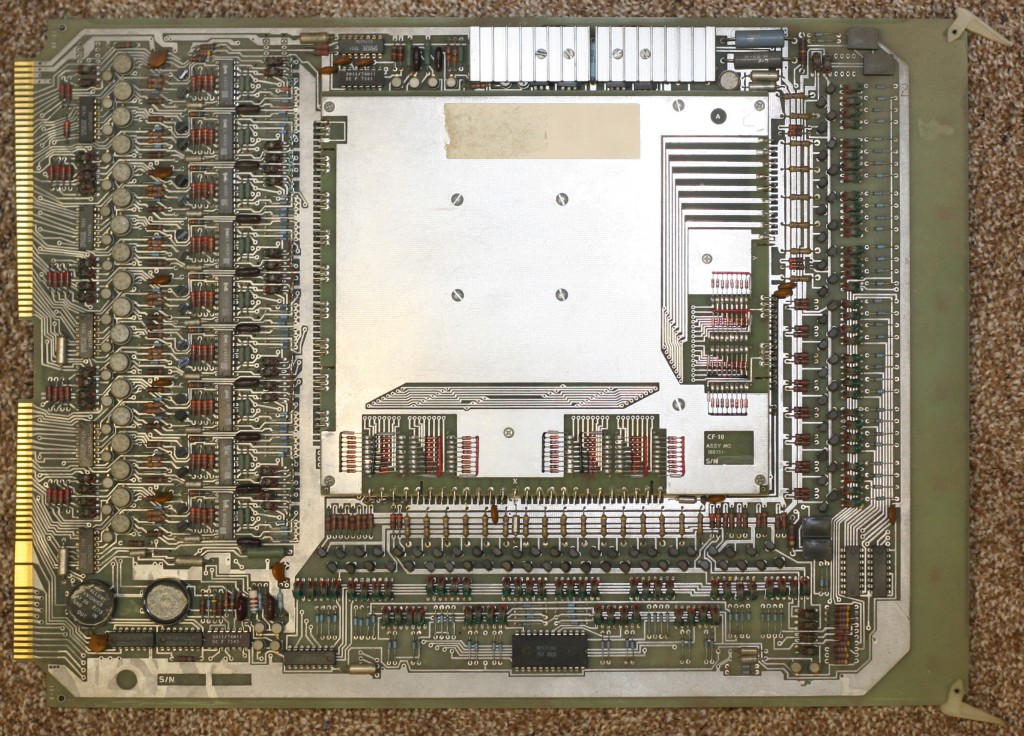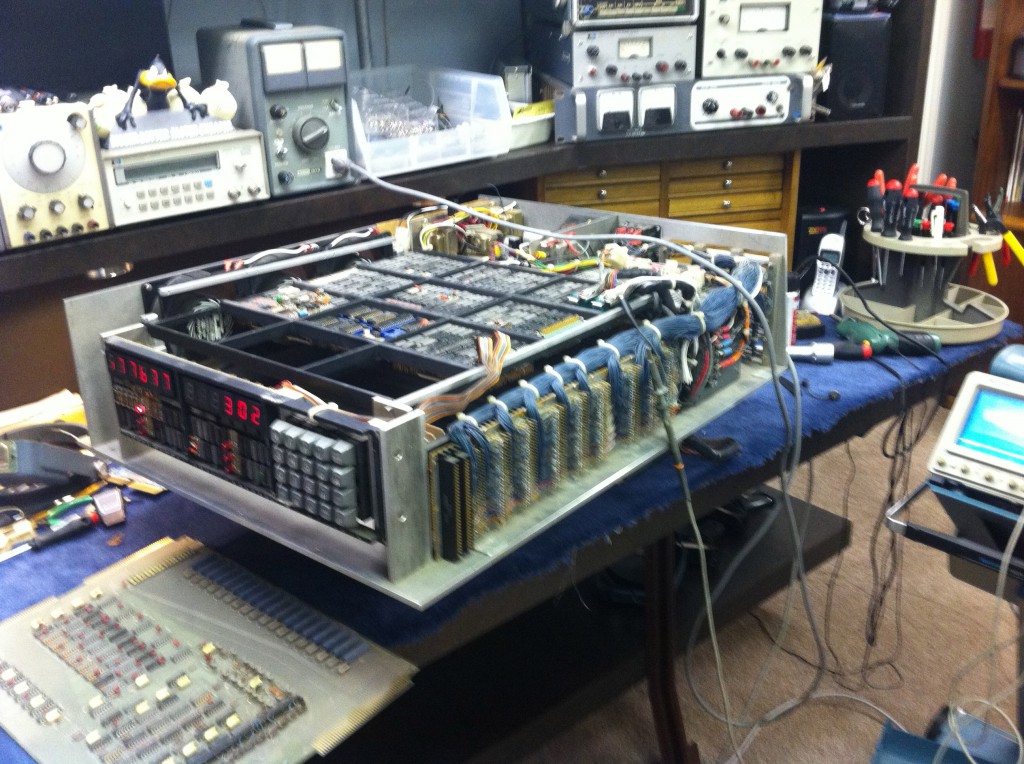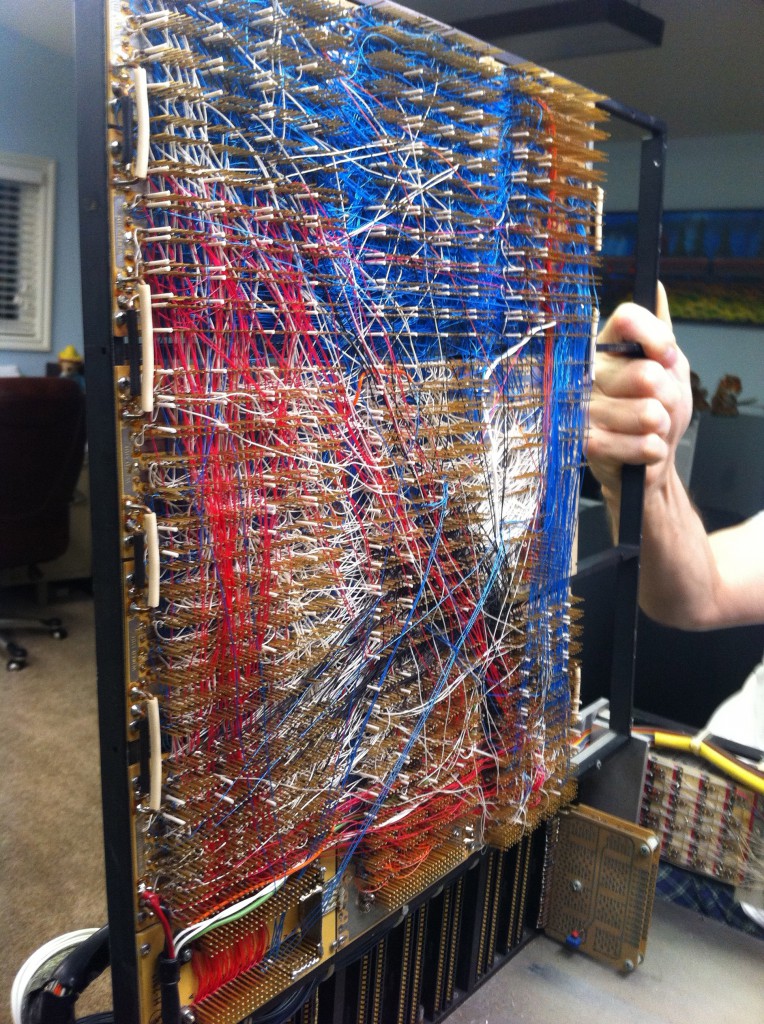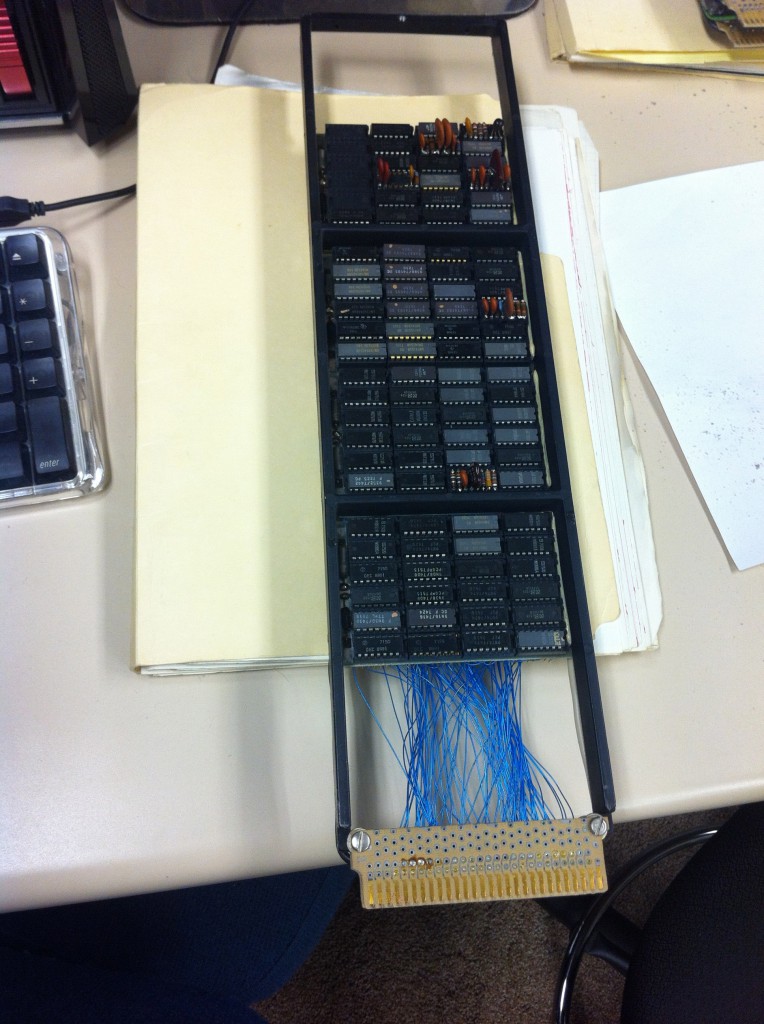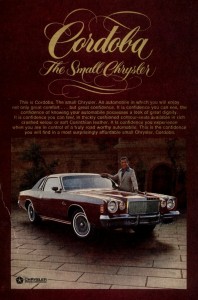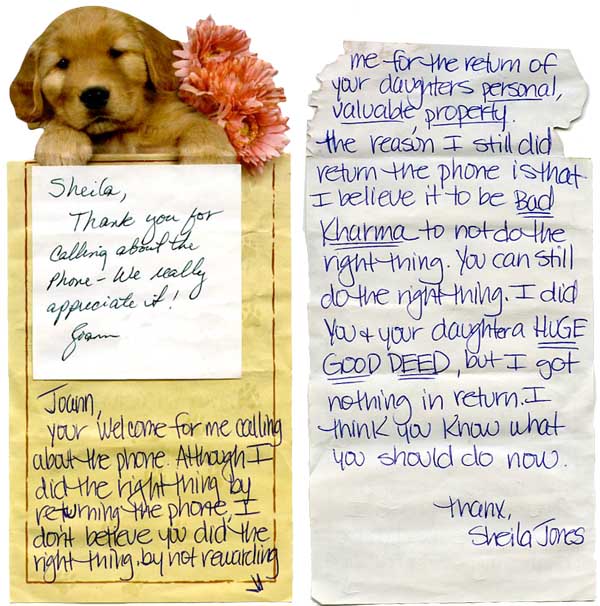Back in March of 2012 I was watching Duplicity and I noticed something odd about 28 minutes in:
In the top right corner there’s an 11×17 paper with an image on it that’s really hard to make out. I recognized it instantly. I first saw the image in question over 30 years ago when my dad brought home from work the November 1982 issue of a magazine called “The DEC Professional” that had the image in it. The image is a hand drawn map of Dungeon.
For the uninitiated, Zork is Infocom’s classic text adventure game. They renamed it to Dungeon at some point, but changed the name back to Zork when they started selling it. My dad had a copy of the Fortran translated version of Dungeon on his PDP-11. My friends and I called “Dungeo” since the filesystem only allowed 7 letters in the name—I didn’t get that it was actually called Dungeon until I was much older [Ed. 2022-07-08: I recently created dungeo.org in homage to the name, check it out!]. So when he brought the magazine home, it was specifically because of the included map and because he knew I loved the game.
Here is a scan of that map (from Tom Almy’s Dungeon page):
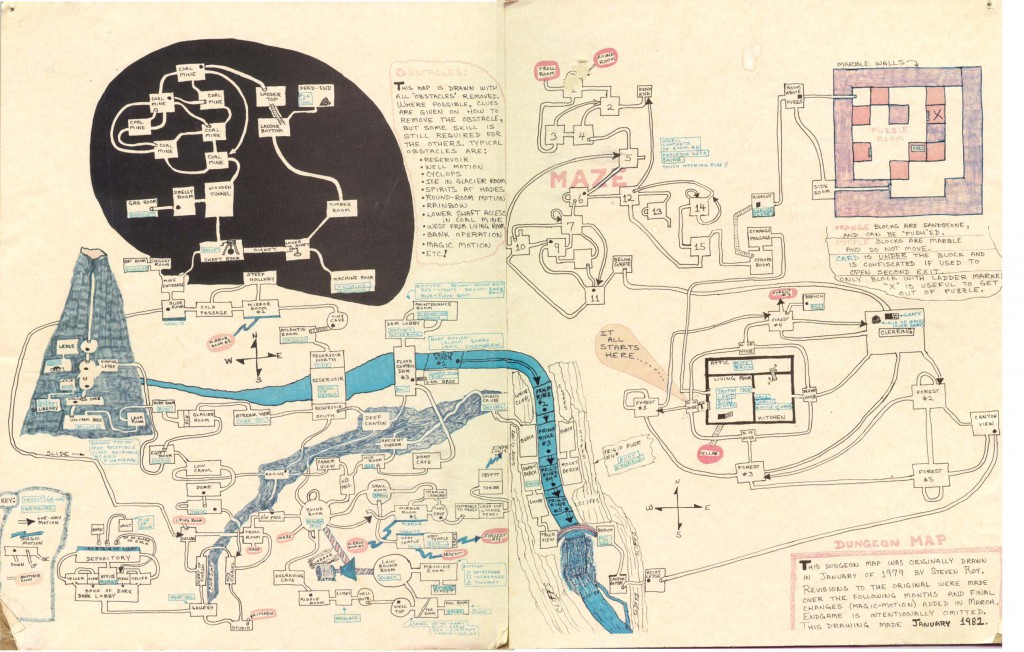
I must have stared at this map for days, cumulatively. My cousin traced it, enlarged it and hung it on his wall (and recently recreated and enhanced it). I currently have a black and white photocopy hanging in my computer room. I always thought it was a very good map (even though it lacked the “end game”). The point is, I’ve known and loved this image forever.
But it’s also obscure! How many people had PDP-11s and played Dungeon and happened to see the map in “The DEC Professional”? And how many of them had this map make an impact on their lives? To me it seems like that can’t be a very large number…
And so it was crazy to me that I’d happen to see that map that had made such an impact on me be in a movie that came out 27 years after the map’s publishing in an obscure computer magazine. Who was the set decorator that grabbed the map? Did he know what it was? Was it someone else’s and he just thought it looked cool? If so, whose was it? IMDB says the set decorator in Duplicity was George DeTitta Jr. But what it doesn’t say is, “why?”
